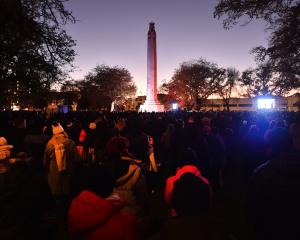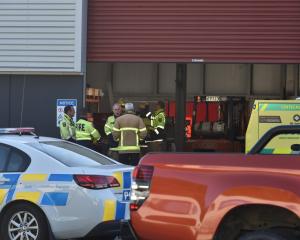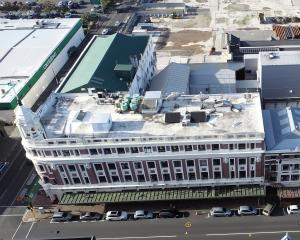But the Dunedin City Council's project manager for the upgrade, Brian Turner, has repeated a plea for people to stay away from the area - so the the job can be finished with neither injury nor fatality - after watching a surfer walk to the end of the outfall pier, throw his surfboard in the waves and jump in after it.
Surfers loved the area, he said, because a sand bar had formed where the temporary pier had been built for the construction, but "accidents do happen" on jobs like the outfall.
The deaths of two men working for McConnell Dowell on a sewage outfall pipe late last month in Christchurch - the same company doing the St Kilda job - were an example.
Heavy beams were being moved from the pier on to John Wilson Ocean Dr, and that meant the area was not a place for sightseers - or surfers.
"We're coming to a very dangerous part for people walking along John Wilson Ocean Dr," Mr Turner said, and until the work was finished, he pleaded for people to stay away.
"People have to stay off the working area of John Wilson Ocean Dr, and stay off and away from the trestle (pier)."
Mr Turner said there was only 1400mm of pipe between the sea- and land-based sections of the outfall to be finished.
It was hoped pressure testing would begin this month, and hydraulic, or "flow" testing in December.
Most of the work under way was being done by divers connecting the underwater section of the pipe to the section that cuts beneath the Chisholm Park Golf Club, a 1500mm tunnel underground from Tahuna to a point 250m off St Kilda beach.
The outfall pipe is part of a project to take effluent discharged from the Tahuna sewage-treatment station and dispose of it 1.1km out to sea, and will be followed by the construction of a new pumping station with chlorination and odour-control facilities at the Tahuna plant.
The work is expected to end the embarrassing problem of beaches being closed when sewage washes back from where it is pumped out to sea at Lawyers Head, with much cleaner treated waste more efficiently and quickly diluting and mixing with sea water.
In between the pressure and flow testing, divers would drill holes in "diffusers" at the end of the pipe.
Once the work was complete, the pier would be removed, and while all work was weather-dependent, it was expected that would happen in January or February next year.
Tenders for registration of interest in carrying out stage two of the work, the installation of a $67 million secondary-treatment system at the plant, have been advertised.
A shortlist of about four would be made, before a "request for proposal" stage began, when financial aspects would be discussed.
Options for the treatment system - in particular what to do with the "solid waste" removed from the sewage - has yet to be decided, and there is bound to be strong public interest in the decision.
Possibilities include composting, using the waste by-product for landfill and burning the sludge to produce power, though all have down-sides.
Mr Turner said consultants were working through a "rigorous process" on the options, and about 20 different methods of dealing with the sludge had been reduced to about 10.
He expected a report on the issue to go to the council's executive management team, and then the infrastructure services committee early next year, possibly in February
Advertisement













